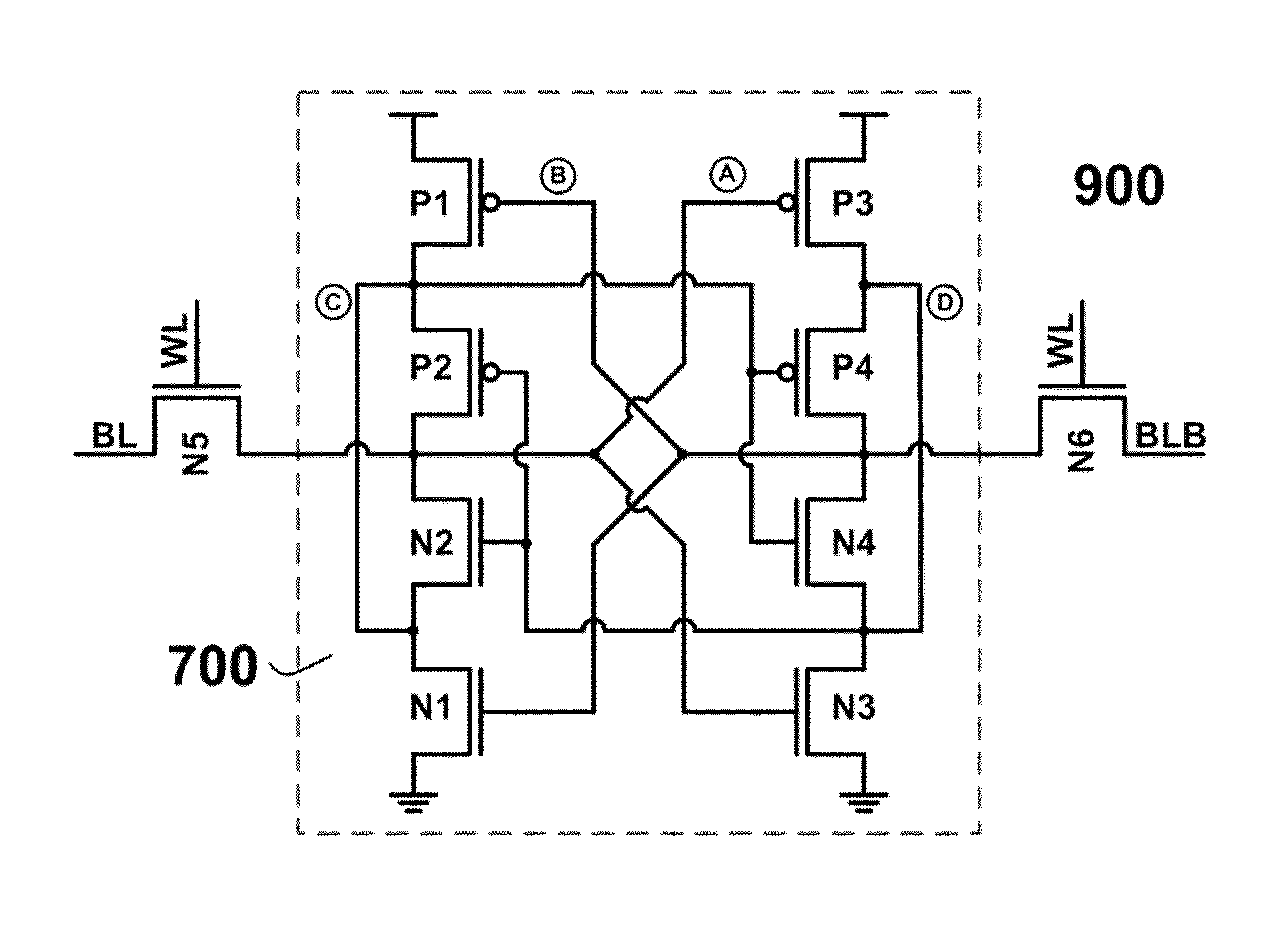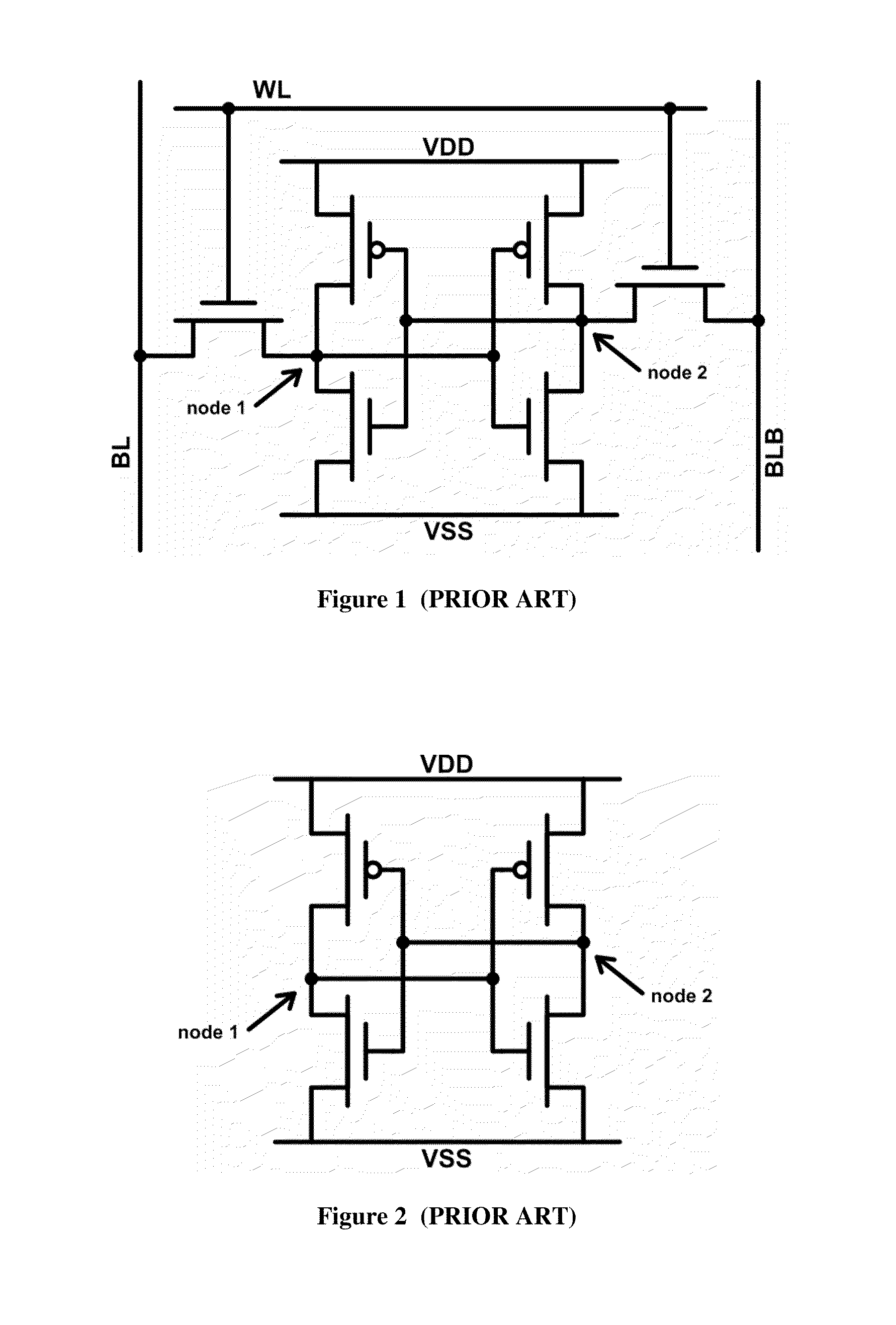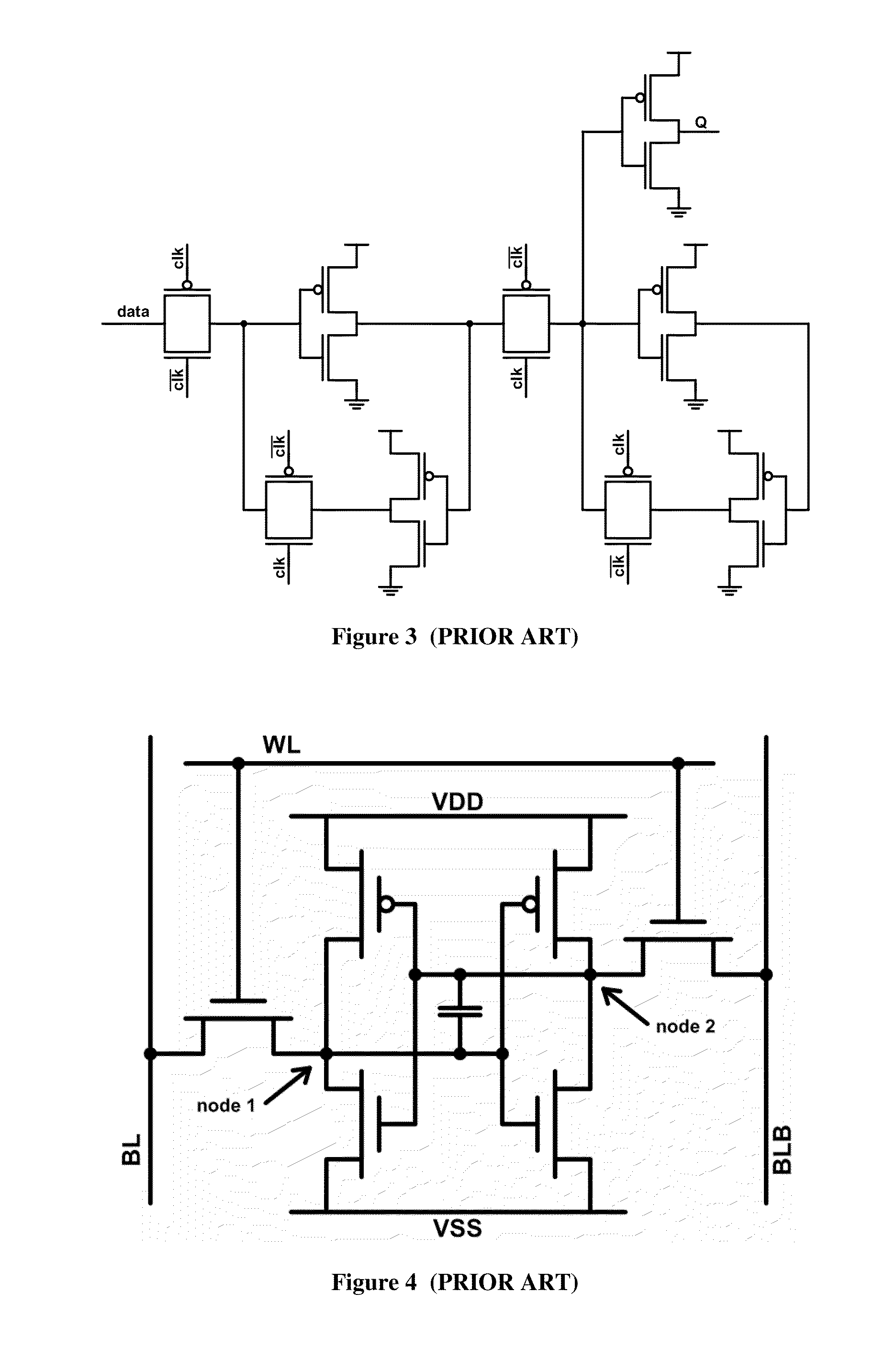Eight transistor soft error robust storage cell
a storage cell and transistor technology, applied in the field of eight transistor soft error robust storage cells, can solve the problems of 6t sram cells, vital building blocks of integrated circuits, yield, reliability and power consumption,
- Summary
- Abstract
- Description
- Claims
- Application Information
AI Technical Summary
Benefits of technology
Problems solved by technology
Method used
Image
Examples
Embodiment Construction
[0034]For convenience, like structures in drawings will be referenced by like numerals in the description. The following describes an eight transistor storage cell.
[0035]Referring to FIG. 7, an eight transistor storage cell in accordance with an embodiment of the present invention is illustrated generally by the numeral 700. The eight transistor storage cell 700 comprises four n-channel transistors N1, N2, N3 and N4 (known as drive transistors), four p-channel transistors P1, P2, P3 and P4 (known as load transistors) and four internal nodes A, B, C and D. Transistors N2, N4, P2 and P4 are given the name of core transistors. Transistors N1, N3, P1 and P3 are given the name of outer transistors. Nodes A and B are located at the drains of the core transistors and nodes C and D are located at the drains of the outer transistors.
[0036]In the storage cell 700 one logical value will be stored on nodes A and C and a complementary logical value will be stored on nodes B and D. Referring to F...
PUM
 Login to View More
Login to View More Abstract
Description
Claims
Application Information
 Login to View More
Login to View More - R&D
- Intellectual Property
- Life Sciences
- Materials
- Tech Scout
- Unparalleled Data Quality
- Higher Quality Content
- 60% Fewer Hallucinations
Browse by: Latest US Patents, China's latest patents, Technical Efficacy Thesaurus, Application Domain, Technology Topic, Popular Technical Reports.
© 2025 PatSnap. All rights reserved.Legal|Privacy policy|Modern Slavery Act Transparency Statement|Sitemap|About US| Contact US: help@patsnap.com



